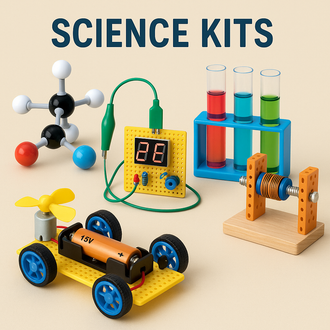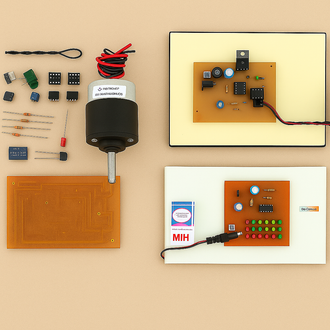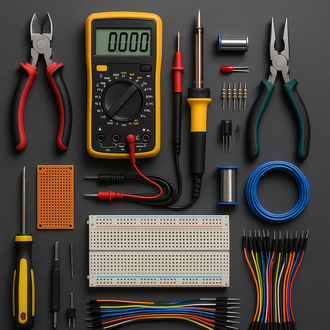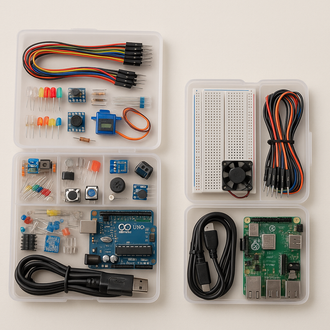
Future-Proof Your Projects With These Top Tech Kits
- 17 Feb, 2025
Tech Kits for DIY: Types, Benefits & How to Choose
Living in a time when technology is moving at the speed of light, a forward-thinking mindset—paired with the right tools—keeps you ahead. Whether you’re a student, hobbyist, or professional, adding a tech kit to your projects can open new possibilities. Beyond simplifying complex concepts, these kits offer hands-on access to cutting-edge technologies in robotics, IoT, and electronics.
Let's explore how these kits can help you future-proof your projects while staying aligned with the latest trends in tech and innovation.
The Rise of Tech Kits in the DIY Culture
Over the last decade, tech kits have surged in popularity across the DIY community. From simple robotics kits in STEM education to professional IoT modules, they make complex systems understandable for all ages and skill levels. They encourage experimentation and foster problem-solving in real-world contexts.
This growth aligns with the global emphasis on STEM (Science, Technology, Engineering, and Mathematics). From basic circuits to advanced robotics, learners become future-ready—at schools, makerspaces, and at home.
Types of Tech Kits to Look Out For
If you're starting or levelling up your next project, here are standout categories:
1. STEM Robotics Kits
Robotics kits are a great way to learn mechanical design, coding, and electronics. Most include pre-assembled parts, motors, and sensors to build functional robots while learning automation principles.
STEM robotics kits provide scalable challenges for beginners and advanced creators alike. Starters often use block-based coding, while experienced builders explore Python or C++ for sophisticated behaviours.
2. DIY Project Kits
Ideal for hands-on learners, DIY project kits bundle tools and components to create innovations from scratch. Common parts include PCBs, LEDs, sensors, and microcontrollers—perfect for everything from wearables to smart-home devices.
DIY projects are highly versatile: build an automated plant-watering system, a custom audio amplifier, or a unique gadget—these kits are a launchpad for creativity.
3. IoT & Home Automation Kits
As smart living becomes mainstream, IoT kits integrate sensors, controllers, and wireless modules so you can prototype devices like temperature monitors, security cameras, or automated lighting with ease.
They’re especially useful for rapid prototyping—test, iterate, and refine ideas without large-scale manufacturing.
4. Renewable Energy Kits
With sustainability in focus, renewable energy kits help you explore eco-friendly solutions. Many include solar panels, small wind turbines, and related components to learn green-energy fundamentals and inspire climate-positive innovation.
5. Electronics Kits
For beginners and advanced users alike, electronics kits are essential to understand how devices work. You’ll find assortments of resistors, capacitors, ICs, sensors, soldering tools, and even microprocessors—great for prototyping and repair.
These kits shine in early concept validation and in restoring/augmenting existing devices—boosting hands-on learning and practical skills.
Benefits of Using Technology Kits
Hands-on learning: Tech kits bridge theory and real-world application, letting you practice concepts immediately.
- Encourages creativity: A safe sandbox to explore ideas and experiment with technologies.
- Accessibility: Pre-assembled parts and friendly guides make advanced tech approachable.
- Future-proofing: Build skills aligned with fast-changing industry trends.
- Cost-effective innovation: Prototype and test ideas without heavy investment.
How to Select a Tech Kit That Fits Your Needs
1. Define Your Goal
Want to build a robot, start exploring IoT, or learn electronics fundamentals? Clarity of objective makes choosing the right kit easier—and your build more rewarding.
2. Assess Your Skill Level
Beginners should look for clear instructions and minimal assembly; advanced users can opt for kits with deeper customisation and coding.
3. Check Compatibility
Ensure the kit works with your existing tools, software, and devices. Some microcontroller kits require specific IDEs or drivers.
4. Read Reviews & Tutorials
Before purchasing, review user feedback and tutorials to understand scope, ease-of-use, and typical pitfalls.
Future Applications of Tech Kits
Beyond learning, tech kits catalyse innovation across sectors—assistive robotics in healthcare, energy-efficient smart-city lighting, and traffic management via IoT. Brands like KitsGuru make high-quality, functional kits accessible to students, educators, and innovators, empowering the next generation of builders.
Conclusion
Tech kits are reshaping how we learn, prototype, and solve problems. From STEM robotics to DIY IoT modules, hands-on engagement nurtures creativity and adaptability. Whether you want a DIY kit to upskill or you’re hunting components for your next breakthrough, the right kit helps future-proof your projects. The possibilities are endless—start building today!
















